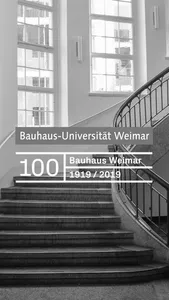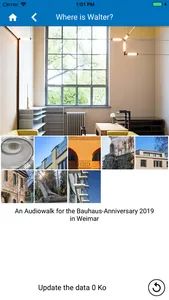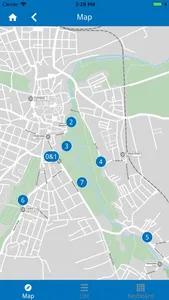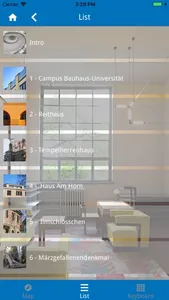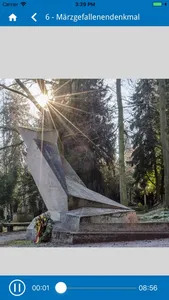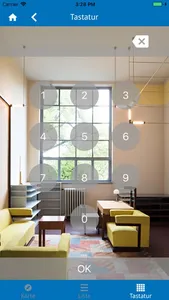In 2019, the 100th anniversary of the founding of the Bauhaus in Weimar will be celebrated. Together, the Chair of Experimental Radio and the Chair of Monument Preservation and Building History at the Bauhaus-Universität Weimar used this occasion to examine the inheritance and the traces left by the Weimar Bauhaus in an artistic way. For this interdisciplinary project, students of Media Art and Urbanism compiled an Audio Walk to familiarise visitors of the historical founding location with the history and stories surrounding the Weimar Bauhaus and its founder Walter Gropius.
The audio walking tour, “Where is Walter?” is divided up into seven tracks and embarks on a search for traces of the first Bauhäusler and their works. The different tracks can be heard in any order, independently of one another. In just less than an hour, Track 1 leads you to the most important Bauhaus sites on the university campus. In addition, there are 5 shorter tracks at other positions throughout town, where Gropius and Co. left evidence of their work. All the positions can be reached on foot or with public transportation. A walk through the Park on the river Ilm leads to the Reithaus (Track 2), where László Moholy-Nagy taught the preliminary course, to the Tempelherrenhaus (Track 3), which Johannes Itten used as his atelier. The House Am Horn (Track 4) that was built as a model home for the Bauhaus Exhibition in 1923, is also accessible by walking across the park, as is the restaurant “Ilmschlösschen” (Track 5), in which parties already took place during the Bauhaus years. Track 6, on the other hand, is concerned with the Bolt Monument at the Weimar Central Cemetery, which is the only built object designed by Walter Gropius in Weimar. A bonus track (Track 7) reveals “Walter’s Vision”.
The Audio Walk is not meant to be purely informational, but rather – by connecting the contents with stories and sounds – transforms the visit into a sensual experience. The students composed each track individually by artistically interweaving original recorded quotes, interviews, sound elements and radio play effects. This provides exciting changes between the seven Bauhaus sound tracks that are not only entertaining but also especially interesting because of the lesser-known aspects about the history of the Weimar Bauhaus and its pertinence to today’s University that are communicated. We were able to “borrow” the voices from professional actresses and actors, primarily from the German National Theatre. The soundtrack was performed by the BauhausFM Radio Orchestra, which is also a student project at the Bauhaus University.
The audio walking tour, “Where is Walter?” is divided up into seven tracks and embarks on a search for traces of the first Bauhäusler and their works. The different tracks can be heard in any order, independently of one another. In just less than an hour, Track 1 leads you to the most important Bauhaus sites on the university campus. In addition, there are 5 shorter tracks at other positions throughout town, where Gropius and Co. left evidence of their work. All the positions can be reached on foot or with public transportation. A walk through the Park on the river Ilm leads to the Reithaus (Track 2), where László Moholy-Nagy taught the preliminary course, to the Tempelherrenhaus (Track 3), which Johannes Itten used as his atelier. The House Am Horn (Track 4) that was built as a model home for the Bauhaus Exhibition in 1923, is also accessible by walking across the park, as is the restaurant “Ilmschlösschen” (Track 5), in which parties already took place during the Bauhaus years. Track 6, on the other hand, is concerned with the Bolt Monument at the Weimar Central Cemetery, which is the only built object designed by Walter Gropius in Weimar. A bonus track (Track 7) reveals “Walter’s Vision”.
The Audio Walk is not meant to be purely informational, but rather – by connecting the contents with stories and sounds – transforms the visit into a sensual experience. The students composed each track individually by artistically interweaving original recorded quotes, interviews, sound elements and radio play effects. This provides exciting changes between the seven Bauhaus sound tracks that are not only entertaining but also especially interesting because of the lesser-known aspects about the history of the Weimar Bauhaus and its pertinence to today’s University that are communicated. We were able to “borrow” the voices from professional actresses and actors, primarily from the German National Theatre. The soundtrack was performed by the BauhausFM Radio Orchestra, which is also a student project at the Bauhaus University.
Show More
